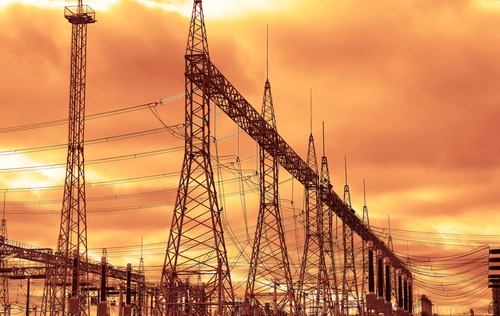NERC report on grid reliability outlines challenges over next 10 years

The North American Electric Reliability Corp. (NERC) said the greatest challenge to reliability over the next 10 years is managing the transformation of the grid and the rapid change to the resource mix.
These findings were part of NERC’s 2021 Long-Term Reliability Assessment (LTRA), which calls for greater coordination between the natural gas and electricity industries as stakeholders and policymakers work to ensure grid reliability during this transition period.
“When we look at events over the last several years, it is clear that the bulk power system is impacted by extreme weather, and that it is happening more often,” John Moura, director of Reliability Assessment and Performance Analysis at NERC, said. “Prioritizing reliability as climate change policies are developed will support a transition that assures electric reliability in an efficient, effective and
environmentally sensitive manner.”
The report says there is a high probability of insufficient resources and energy to serve electricity demand, as early as Summer 2022, in many parts of the Western Interconnection. Extreme weather events and performance issues associated with some inverter-based resources, such as solar, wind, and new battery or hybrid generation, may also have a potential negative impact on reliability. In addition, the LTRA emphasizes the criticality of the role of natural gas as a balancing resource.
Over the next 10 years, California, parts of the northwestern and southwestern United States, and the Midcontinent Independent System Operator (MISO) areas, in particular, are projecting capacity shortfalls and periods of insufficient energy due to declining reserve margins and generator retirements. Texas, California, and the Northwest United States project that peak demand cannot be met without some combination of variable generation and imports.
The report said that regional coordination and resource adequacy planning among entities in these at-risk regions is strongly encouraged.
“As our system’s resource mix changes, so does the need to use different assessment approaches to identify reliability risk,” Mark Olson, manager of Reliability Assessments, said. “Focusing only on the resource needs for expected peak electricity demand in summer or winter could neglect other risk periods, such as when variable generation is not producing as much energy as expected. Resource planning needs to ensure that system operators have at their disposal sufficient generation that can be dispatched to deliver needed energy at all hours of the day and in all seasons.”
NERC recommends several areas of focus for the Electric Reliability Organization (ERO) Enterprise, stakeholders, and policymakers. Among them, they suggest developing sufficient flexible resources to support increasing levels of variable generation uncertainty; improving coordination between the natural gas and electricity industries; rethinking the regulatory structure and oversight of natural gas supply for electric generation; focusing attention on energy sufficiency with the understanding that capacity alone does not provide for reliability unless the fuel behind it is assured, even in extreme weather; ensure distributed energy resources are sufficiently incorporated into bulk power system planning and operations; and ensuring planning studies and operating models accurately account for new inverter-based resources.
